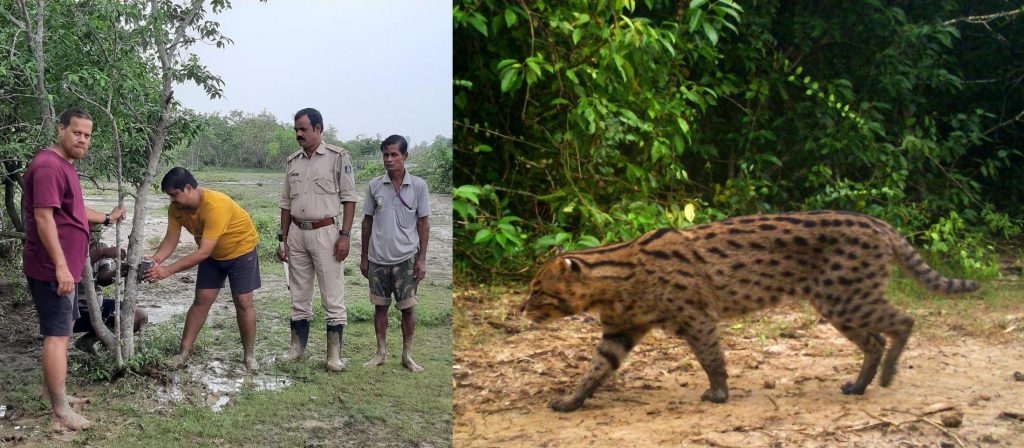Be it mountains, rainforests or animals, due to human activities, thousands of species have either become extinct or endangered over the past century. Needless to say, the loss of one species often triggers the loss of others affecting the balance of our planet’s ecosystem.
The latest addition to the list is fishing cat, a feline species, mostly seen in South Asian countries of which Odisha is a part.
They are now considered an endangered species by the International Union for Conservation of Nature (IUCN) Red List. With the Odisha government declaring a fishing cat as the ambassador of Chilika Lake and launching a conservation project for the species, wildlife activists are now hopeful that the state may witness a rise in their numbers. Ahead of World Wildlife Day March 3, Sunday POST talks to a few wildlife activists to ascertain the reasons behind fishing cats’ disappearance from wetlands and what measures should be adopted for their conservation.
Retaliation killings contribute to dwindling population
Wildlife biologist and IUCN-CEM- Wetland Ecosystem Specialist Member Prakash Mardaraj, says “Fishing cat is a medium-sized cat seen in South and Southeast Asia. It is the apex predator of its ecosystem. Odisha Forest & Environment department has launched a few projects in the state for its conservation. Despite management efforts taken by the state the population is on the decline. Though it enjoys the status of state animal in West Bengal, retaliation killings of fishing cats is frequent.”
Explaining the reasons behind their dropping number, he adds, “Habitat loss and fragmentation for the sake of developmental activities such as encroachment and urbanisation, industrialisation, agriculture and aquaculture (prawn and shrimp farms) are among the chief reasons behind the dwindling population of fishing cats. Other common reasons include poisoning, trapping and clubbing and being caught in fishing nets.”
Another threat to the fishing cat is depletion of its main prey-fish due to unsustainable fishing practices by the local fisherman community, points out Mardaraj.
About measures being taken to conserve the felines, the animal lover says, “Survey for its population growth needs to be done in the state. Besides, restoration of their habitats which include wetlands and mangroves with complete restriction of any human interference in the cat territory is the need of the hour. Government should sensitise people who share common resources with the smaller cats about their role in our ecosystem.”
Habitat destruction a concern
Akash Ranjan Rath, former honourary wildlife warden of Puri, says, “Entire coastal wetlands including Chilika, Bhitarkanika (Ramsar sites) and some of its peripheral regions are ideal habitats of fishing cats.
As an indicator, a fishing cat plays an important role in the wetland diversity. Very little is known about the ecology and behaviour of this species. In the last couple of years its mortality rate is rising due to poaching, retribution killing and habitat destruction.”
“Fishing cats love to spend time in water bodies and marshland having tall beds forming graminoid species like Reed, Swamps, and cultivated tall grasses. Reduction of food and daytime resting areas are a great threat to this species”, Akash adds.
Poaching not a threat
Rajnagar Divisional Forest Officer (DFO) JD Pati says, “Bhitarkanika, country’s second-largest mangrove forest, is not just the home to salt-water crocodiles, it is also inhabited by fishing cats. Earlier census through direct sighting was carried out to know the exact number of fishing cats. But after the fishing cat was declared ambassador of Chilika lagoon, the state government initiated projects for the conservation of the felines. We have installed 40 camera traps in the park in order to monitor the movements of animals and density of the animals. Besides, the aim behind installing camera is to ascertain whether there is conflict between human and animals. We install cameras for almost 25 days in a block and then shift them to another block. The video recordings are being stored in the memory of the cameras for up to one month.”
He further adds: “We were only using the camera traps in tiger reserve and tiger corridors during the year from 2006-2018. We were not focusing on Bhitarkanika like Sundarban due to the absence of tigers. However, after a discussion with the National Tiger Authority (NTA), it was decided to install the camera traps in 2022 in order to keep an eye on our ecosystem. Exact number of fishing cats, known as an indicator of a healthy ecosystem, will be known in April, 2022. So far, 40 fishing cats have been spotted.”
He further says that one camera was installed in every two square kilometers (1 grid ) for the intensive camera trapping. Apart from fishing cats, the camera also caught the leopard cats, monitor lizards in the region.
He attributes wetland loss owing to hydrological changes and encroachment are the main reasons behind the declining number of the felines. “Fishing cats are not poached. Populations of the felines are largely threatened by destruction of wetlands and the number has come down drastically over the last decade”, signs off Pati .
It may be noted that the state government designated the fishing cat as the ambassador of the Chilika to mark ‘Wildlife Week’ in 2020 and installed about 100 camera traps on the lake shore and some nearby areas to monitor their movements.
Counterview
Biswajit Mohanty, an animal activist and the Secretary of Wild Life Society of Odisha, says, “I don’t think there is a decline in the number of fishing cats because no surveys have been conducted in the past for the felines. All coastal districts right from Ganjam to Puri have a healthy population of fishing cats. Poaching of fishing cats is also very low in Odisha. There is no targeted poaching. Puri district registered poaching of a fishing cat around six years back. Shrinking wetlands has forced the fishing cats to stray into human settlements and prey on fish in ponds and livestock. But I must say that the felines are well protected.”
Rashmi Rekha Das, OP
